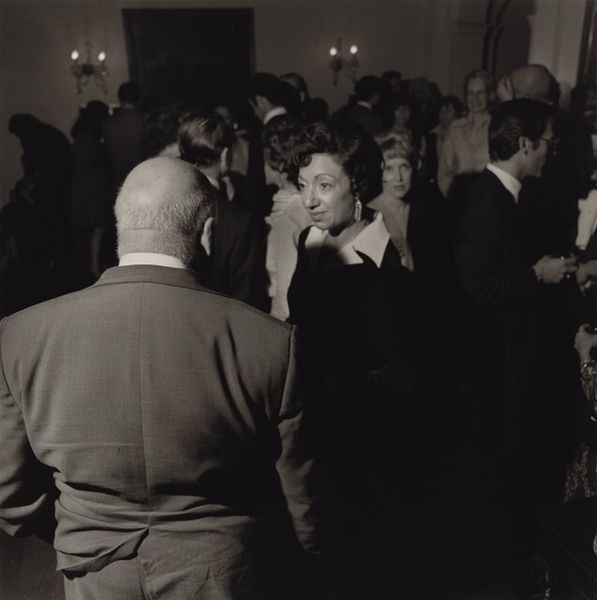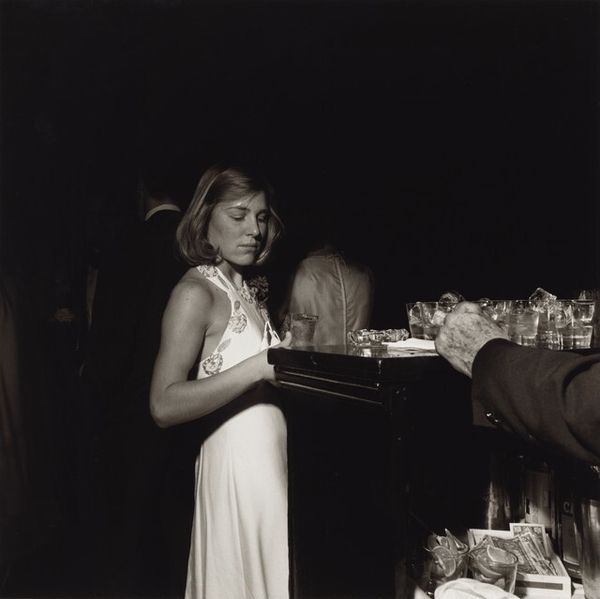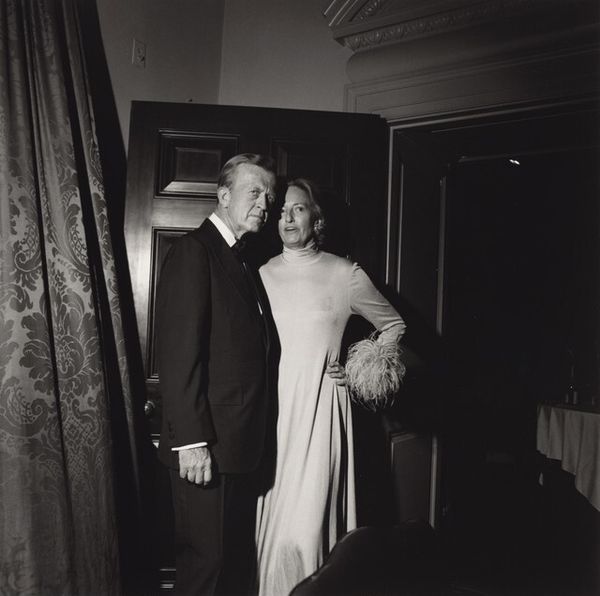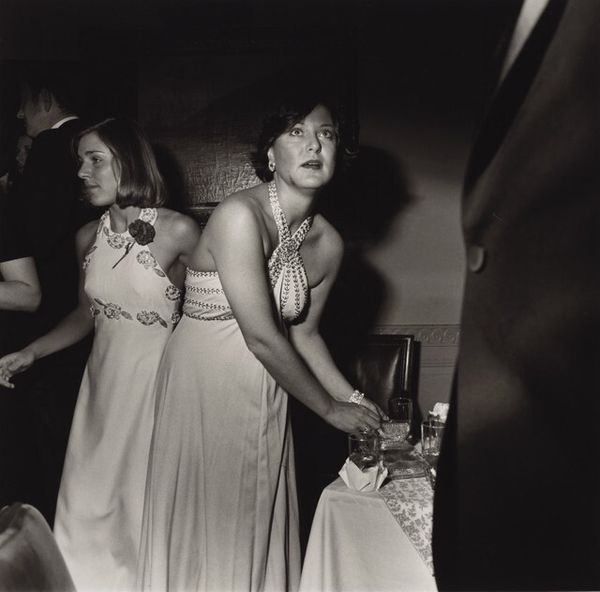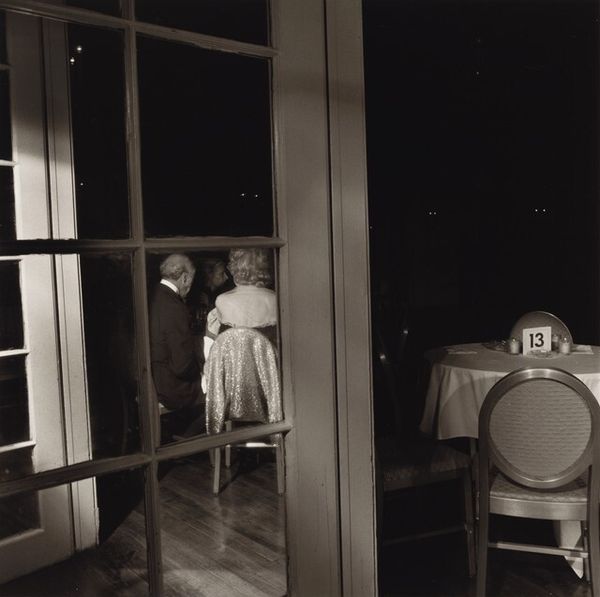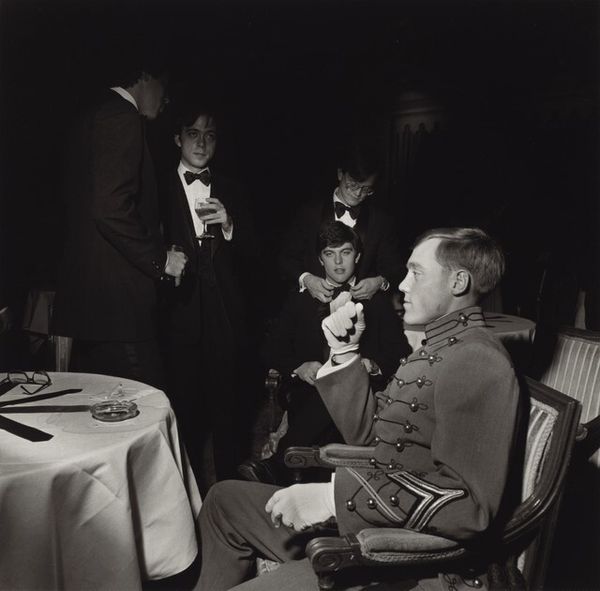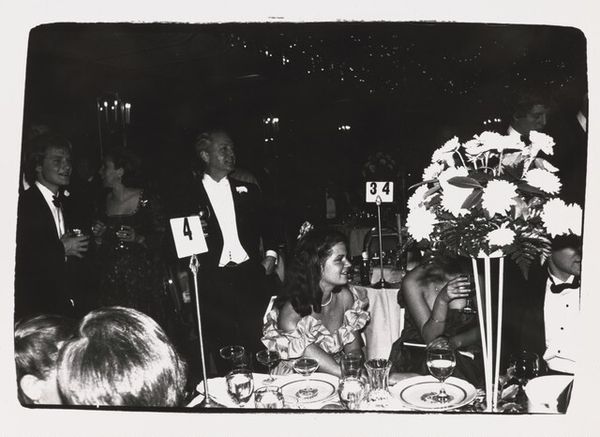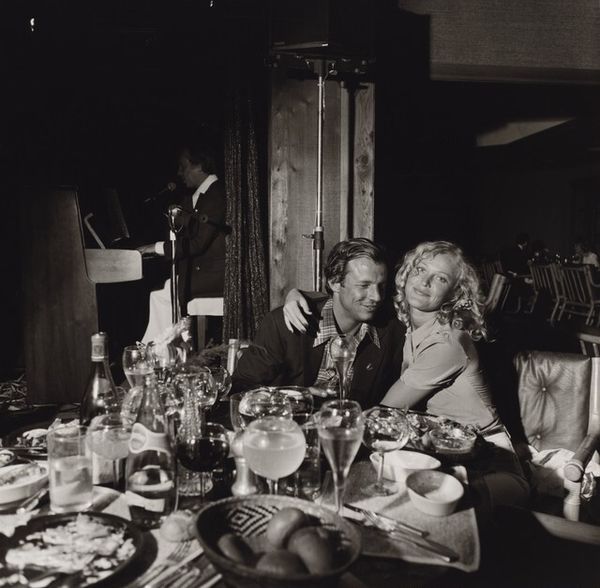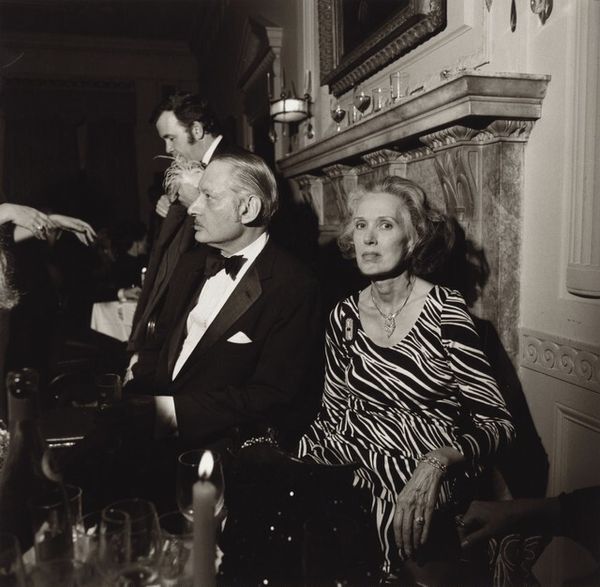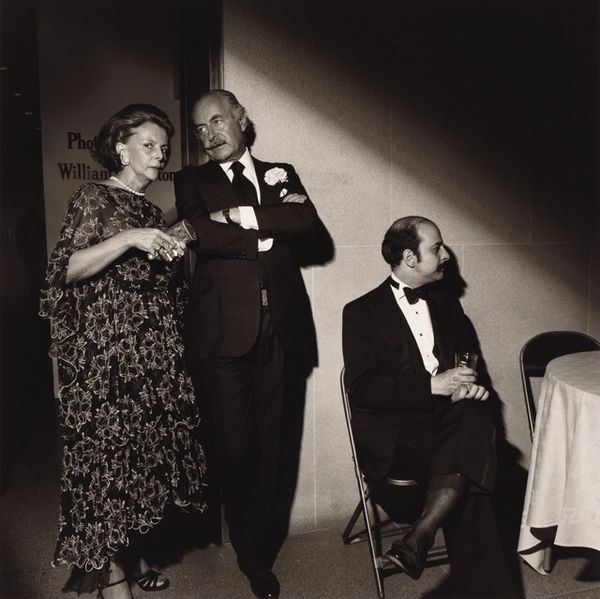
photography
#
portrait
#
black and white photography
#
archive photography
#
street-photography
#
photography
#
historical photography
#
black and white theme
#
monochrome photography
#
genre-painting
#
monochrome
Dimensions: image: 34.8 × 35.7 cm (13 11/16 × 14 1/16 in.) sheet: 50.5 × 40.4 cm (19 7/8 × 15 7/8 in.)
Copyright: National Gallery of Art: CC0 1.0
Curator: Larry Fink's photograph, "Russian Ball, New York City," captured in 1976, presents a darkly elegant snapshot of social life. Its monochrome palette throws into stark relief the composition and poses within. Editor: Yes, and immediately what strikes me is that studied artificiality—it’s palpable in the way the light and shadow sculpt the subjects, creating a stage-like effect. There’s almost a performative aspect to the scene that makes one consider who this event, the "Russian Ball", caters to and its attendees in relation to the broader urban landscape. Curator: I see your point. Fink masterfully utilizes light to direct the eye. Notice the subtle gradations in tone, how the artist coaxes volume out of each shape and face using grayscale values that range from deep shadows to subtle reflected lights— the essence of monochrome. The texture as well, it really helps bring forth the tactile reality of each dress and accessory, and the contrast with dark areas isolates groups to convey clear themes. Editor: True, though it also seems crucial to remember the period and its socioeconomic disparities. The deliberate capturing of this privileged setting—amidst New York's fiscal crisis—invites a critical look at wealth, power dynamics, and social strata within the city itself, not just light. How does documenting luxury act when decay and precarity are also rampant? Curator: Precisely, the stark contrast indeed makes for a visually striking effect, highlighting formal elements such as line, form, and the arrangement of figures in space to guide perception and shape emotional response, whether somber, melancholic, or quietly festive. Editor: It is that inherent tension—between the surface of opulent revelry and the unacknowledged realities surrounding it—that resonates powerfully, sparking contemplation regarding whose stories get told and whose are obscured by spotlights and champagne flutes. It’s as much about who is in the frame, as those definitively absent. Curator: In short, Fink compels viewers to analyze composition and symbolism in their purest form. The careful attention given here showcases how those attributes create mood, regardless of external factors. Editor: And in concert, perhaps, both readings prompt us to dissect those complex layers shaping cultural perception and critical awareness in society today.
Comments
No comments
Be the first to comment and join the conversation on the ultimate creative platform.
